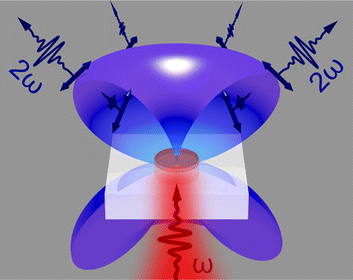ANU marks nano-breakthrough
 Australian scientists have designed a crystal nano-antenna that turns darkness into visible light.
Australian scientists have designed a crystal nano-antenna that turns darkness into visible light.
The crystal’s exciting, light-bending properties could one day be used to create night-vision glasses, holograms and other intriguing devices.
They were developed as nanophotonic components for use in the next generation of highly-controllable laboratory lasers.
Manipulating light on the nanoscale – working with just a few photons at a time - requires nanoscale light sources with the ability to create custom radiation patterns and control polarisation.
Recent years have seen the development of nanoantennas that do exactly that, taking incoming light and transforming its frequency, radiation, and polarisation patterns.
Australian National University (ANU) researcher Dr Mohsen Rahmani says his team’s latest achievement is a big milestone for nanophotonics.
“These semi-conductor nano-crystals can transfer the highest intensity of light and engineer complex light beams that could be used with a laser to project a holographic image in modern displays,” said Dr Rahman.
“The nano crystals are so small they could be fitted as an ultra-thin film to normal eye glasses to enable night vision,” said fellow researcher Professor Dragomir Neshev.
“This tiny device could have other exciting uses including in anti-counterfeit devices in bank notes, imaging cells for medical applications and holograms.”
The team managed to build the device on glass so that light can pass through - critical for optical displays.
“This is the first time anyone has been able to achieve this feat, because growing a nano semi-conductor on a transparent material is very difficult,” said researcher Camacho-Morales.
The research is published in Nano Letters.







 Print
Print